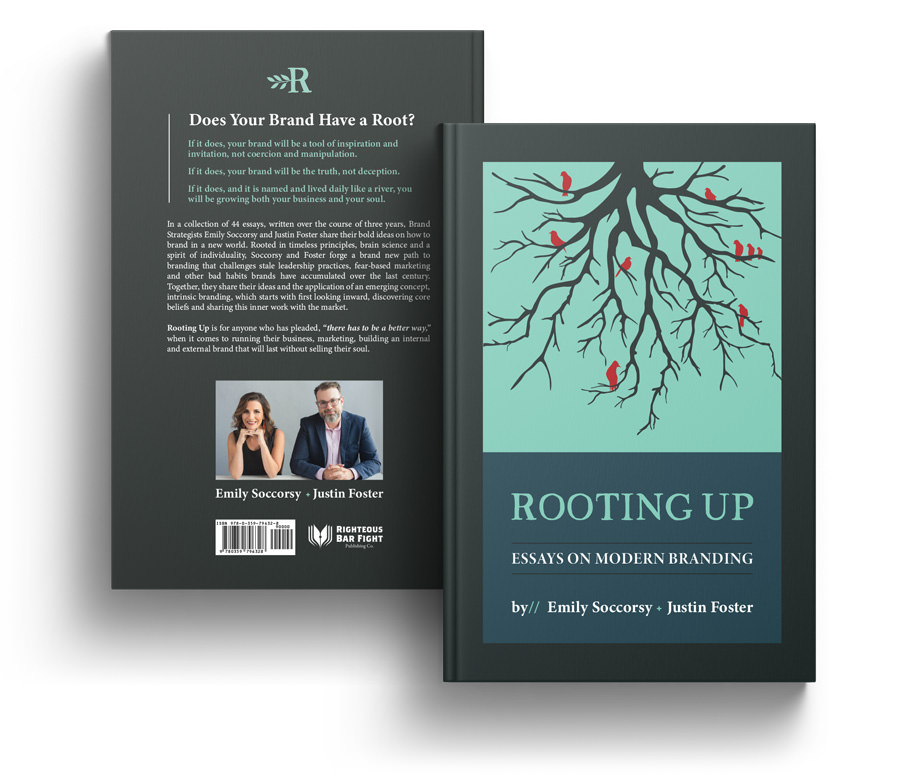Filed Under: Humanistic Marketing
In the best of times being a director of marketing and communication is kind of like holding your ground in the center of a tornado. You must watch carefully where you step. And while it is relatively calm in the eye, every other thing is hurtling, very near, at dangerous speeds.
A misplaced step might pick you and your day or week up, sending you swirling along with all that is whipping around you: the demands of your team, a well-intentioned CEO who regularly gives you uninvited feedback and recommendations for new tactics, and the necessary everyday agility required to manage social media, digital advertising, marketing copy, message management, crisis communication and public relations, ie the job description part of your job.
You’re so near chaos all the time, it’s almost thrilling.
And then chaos really strikes — in the form of a pandemic.
In an instant, all of your outbound messaging needs to be changed. All of your promotional and social copy needs to be changed. The CEO is nervous and eager to collaborate with you. That new hire you were going to make to alleviate some of the chaos has been put on hold. And now everyone is working virtually.
You didn’t need any more madness, but it’s found you anyway.
Add to that the reality that given the timing of this pandemic, there will be no going back to normal when it comes to marketing or branding.
Returning to old ways of target marketing, product positioning and sloganeering will not put your brand in the best position to thrive once we find a new way forward.
Before you hyperventilate, allow us to remind you to breathe. And take a step back. We’re looking out for you.
Ultimately, our instinct to over-complicate must be ignored. Instead, go back, way back, to basics.
To simplicity.
To soul.
To story.
The best approach for sorting out this mess and finding an oasis of calm is to practice what we are calling humanistic marketing. Truth be told, this is nothing new. It’s old — ancient — stuff. Great brands have been doing it for years, through crisis after crisis.
Humanistic marketing is the practice of engaging an audience by appealing to our common human experience and beliefs.
Humanistic marketing is based on four principles:
Humans connecting with humans. Companies don’t buy things. Companies don’t sell things. People do. To communicate effectively with people you need to first think of yourself as a person. This means acknowledging you — and your audience — have emotional, spiritual, physical and intellectual needs that supersede your product or service. You do not have to be a mind-reader to ascertain what those needs are. This would be a good moment, when people are open and have perhaps a smidge more time to ask them about those needs. Then listen. Listening is the entry point for every meaningful human connection.
Transparency is an action. Humanistic marketing requires reality, not image, to be the guiding force that leads an organization forward. In the post-pandemic world, there will be a powerful emphasis placed on transparency. Consumers won’t find transparency as nice to have, they will expect it to be a full, forward part of their brand experience. Brands without that clarity will be dismissed, mistrusted and avoided. So start now to share information early and often. Listen twice and respond later. As part of your transparency, show the faces of the brand, reveal the people who run the machine. Don’t be a logo that just sends out highly polished press releases.
Mastering storytelling is mastering marketing. Storytelling has always been the lifeblood of any great brand. But it’s especially important in a crisis — when humans want to be inspired, enraptured, encouraged. In humanistic marketing, storytelling ALWAYS comes before promotion. Your job is to collect and tell these stories, then use your brand’s marketing infrastructure to share and amplify. The good news is there are plenty of stories; everyone who touches the brand has a story.
Having the courage to own your uniqueness. Branding and marketing are no longer about perception. They are about reality. This shift was made three to five years ago by most organizations. Reality is unique, because it’s messy and vulnerable and particular, which makes it scary. That’s why courage is required to truly brand. Don’t be timid about who you truly are. Be bold, direct and declarative. Guard against the advice from within, and without, to portray sameness, to conform, to use jargon and to stay “safe.”
As we continue to adapt to these new realities, one thing is becoming starkly obvious: brands are either practicing humanistic marketing or inhumane marketing. The latter continue to deploy old-world manipulation using gaslighting tactics and fear-based language. They will reap what they sow and the market will determine their future.
We are here to support, cheer on and guide the humans willing to embrace humanistic marketing practices.
These are the people who will set a new standard for how branding and marketing are practiced in a new world, one buffeted by the winds of change.
You’ll see them standing in the eye of the storm.
We believe being always comes before doing. Are you the head of marketing for your brand or your organization? A sentient being who is also the town crier for your brand?
We invite you to join our free, private community Being Marketers. Inside of Being Marketers you will find a space to help you harmonize between your marketing work and your soul. You’ll have access to full videos from our Being Marketers webcasts, customized content and tools and be the first to learn about our upcoming webcasts, private events and offerings.
